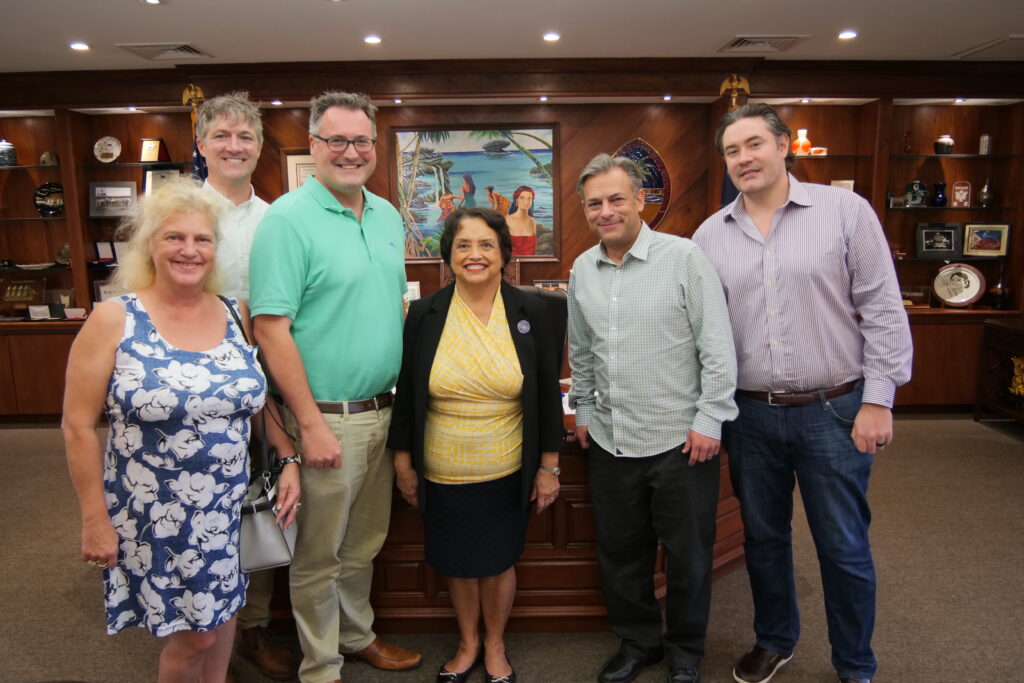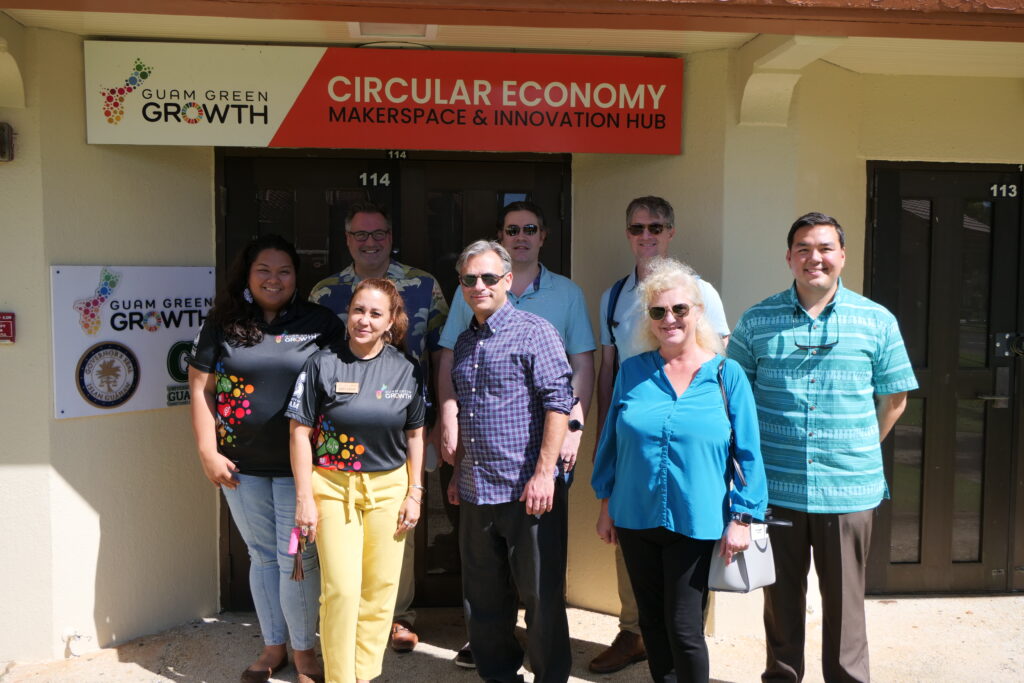President Biden released a FY 2024 budget that prioritizes a vision for prosperity, security, and resilience in the Indo-Pacific region. Few understand the impact these values will have on local economies like Guam’s Governor Lou Leon Guerrero, who is addressing complex problems like supply chain issues with her own, bold vision to transform the island of Guam. ASTRO is proud to be working with the Government of Guam – specifically, on a special project to conceive of the potential application of additive manufacturing on the island. We believe this could dramatically change Guam’s economic future.
After experiencing the adverse economic effects of the COVID-19 pandemic, Gov. Leon Guerrero established a public/private task force to address economic diversification, together with the Guam Chamber of Commerce. She said that, “It was critical to diversify and add multiple industries that will strengthen [Guam’s] economy.” As part of this work, the Guam Economic Development Authority (GEDA) contracted ASTRO to assess the feasibility of a local additive manufacturing (AM) industrial base on Guam, with the idea that this capability might serve as an economic engine for the island and Department of Defense activities in the region.

ASTRO America research team with Gov. Lourdes Leon Guerrero
One of AM’s benefits is enabling part designs that otherwise would be composed of a multitude of parts assembled across a disaggregated sourcing network. Since AM systems can potentially replace conventional supply chains, part production is theoretically possible anywhere a 3D printer is installed and can receive service and reliable feedstock supply. Such flexibility can alter traditional supply chain formulations, enabling localized, parts on demand, which overcomes long lead times (months or even years it takes to source one-off replacement parts).
For an island largely reliant on imports, this could be a game-changer. Estimates of the global 3D printing market range between $10-14 billion and continue to grow at a rapid clip. With growing fleets of U.S. military sea, air and missile defense systems on Guam, having factory-ready 3D printing capabilities could address both logistical challenges for U.S. Armed Forces and support the island’s economic goals to increase transshipment of parts to the continental United States and other parts of the Indo-Pacific.
But it’s not as simple as putting new 3D printing machines on the island and expecting everything to organically build and grow. Major requirements for building such a sector include establishing 3D printing workforce development programs as well as building infrastructure for part post-processing, quality/testing, and inspection. We want to make sure that the entire ecosystem is sustainable – by that, I mean that as we train and educate people, their 3D printing jobs remain on the island, and the infrastructure is built and operated on the island. We need to make sure that the pieces are truly in place for Guam to realize the full potential of 3D printing technology today and in the future.
That’s where the AM blueprint comes in.
The Phase 1 study ASTRO completed for GEDA provides a baseline analysis on Guam’s economic readiness for feasible AM adoption. We spent months working with partners and stakeholders to assess current capabilities and needs for supply chain development; potential strategies for developing such a workforce and capabilities; and potential demand. We found that the building blocks are in place and an initiative would build off existing elements on-island. In fact, it appears likely that if sufficient funding were made available, such conditions could materialize to support a sustainable, productive 3D printing sector.

ASTRO America research team with members of University of Guam’s staff running the Guam Green Growth initiative.
A potential plan for building AM capabilities on-island entails development of three related facilities. These facilities would be primarily established under the management of the University of Guam and GEDA. They would be configured to leverage assistance and sponsorship from outside institutions, including external universities, U.S. and Allied governments, and industry.
First is a Research and Test Center supporting prototyping capabilities as well as advanced quality inspection (e.g. metallography lab) to validate part production for use by DoD and other stakeholders.
Second, a ‘Business Incubator’ would provide a setting for existing contract additive manufacturers and start-ups to re-locate assets in Guam. The facility could host both 3D printers and post-processing equipment, under a shared infrastructure arrangement potentially supported by government.
Finally, an integrated approach to education and technical skills training to enable long-term sustainability of this effort in Guam.
Ultimately, Guam possesses the fundamental building blocks required to establish a high-tech manufacturing sector, and the vision is both transformational and exciting. But much work remains to be done in establishing an ecosystem tailored to distinct AM requirements as well as unique economic and geo-political conditions in Guam.
And to that end, we are excited to be working with Guam’s Bureau of Statistics and Programs on Phase 2 of this project. Phase 2 will conceive an implementation plan to help overcome logistical challenges in resupplying military and civilian operations on a remote island. This plan must help determine a total addressable market and support sustainability and growth. We believe it will.
We believe bringing 3D printing to Guam will go a long way towards building a more prosperous, secure, and resilient Indo-Pacific region. With the appropriate investments in science, technology, and engineering, we could see the island printing its own parts, eventually growing its own capabilities to repair and upgrade critical infrastructure that is needed to keep the region—and America—safe
About the Author
Neal Orringer is president of the Applied Science & Technology Research Organization (ASTRO) America, a 501(c)(3) nonprofit organization that advances government-industry collaborations. Their projects accelerate transition of key manufacturing technologies into defense production.
Subscribe to Our Email Newsletter
Stay up-to-date on all the latest news from the 3D printing industry and receive information and offers from third party vendors.
Print Services
Upload your 3D Models and get them printed quickly and efficiently.
You May Also Like
Reinventing Reindustrialization: Why NAVWAR Project Manager Spencer Koroly Invented a Made-in-America 3D Printer
It has become virtually impossible to regularly follow additive manufacturing (AM) industry news and not stumble across the term “defense industrial base” (DIB), a concept encompassing all the many diverse...
Inside The Barnes Global Advisors’ Vision for a Stronger AM Ecosystem
As additive manufacturing (AM) continues to revolutionize the industrial landscape, Pittsburgh-based consultancy The Barnes Global Advisors (TBGA) is helping shape what that future looks like. As the largest independent AM...
Ruggedized: How USMC Innovation Officer Matt Pine Navigates 3D Printing in the Military
Disclaimer: Matt Pine’s views are not the views of the Department of Defense nor the U.S. Marine Corps Throughout this decade thus far, the military’s adoption of additive manufacturing (AM)...
U.S. Congress Calls Out 3D Printing in Proposal for Commercial Reserve Manufacturing Network
Last week, the U.S. House of Representatives’ Appropriations Committee moved the FY 2026 defense bill forward to the House floor. Included in the legislation is a $131 million proposal for...

































